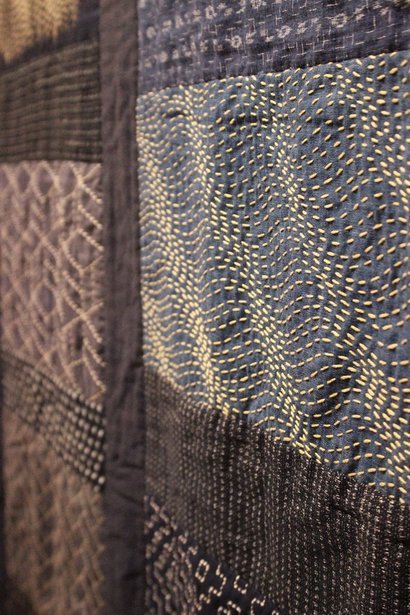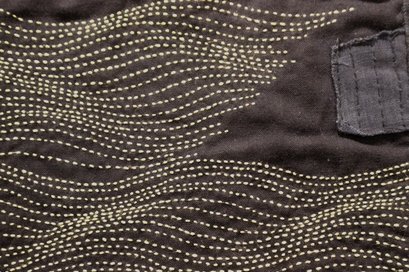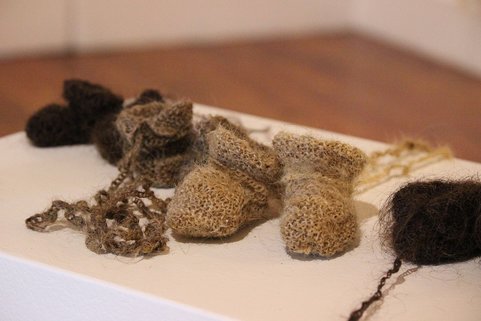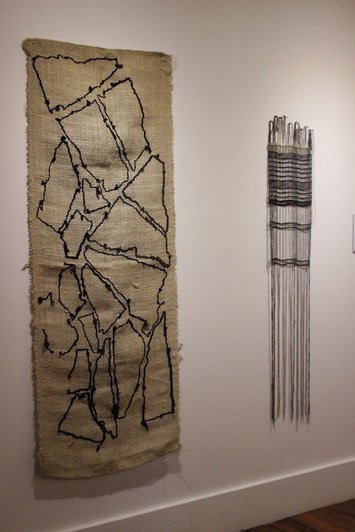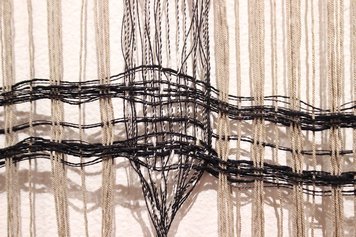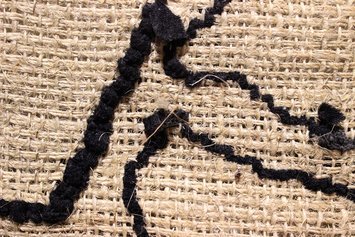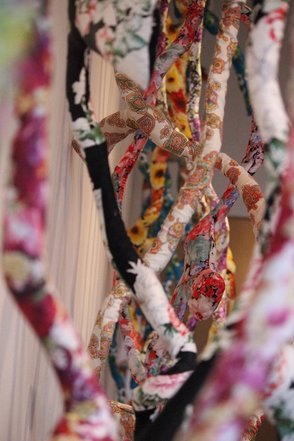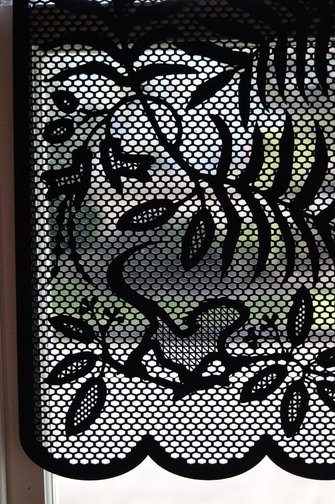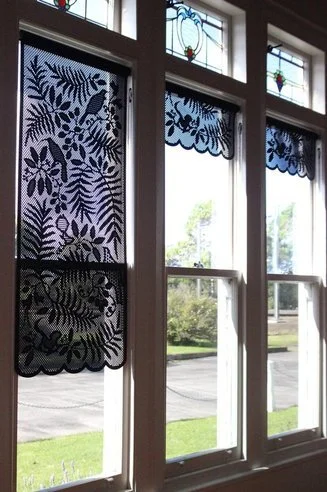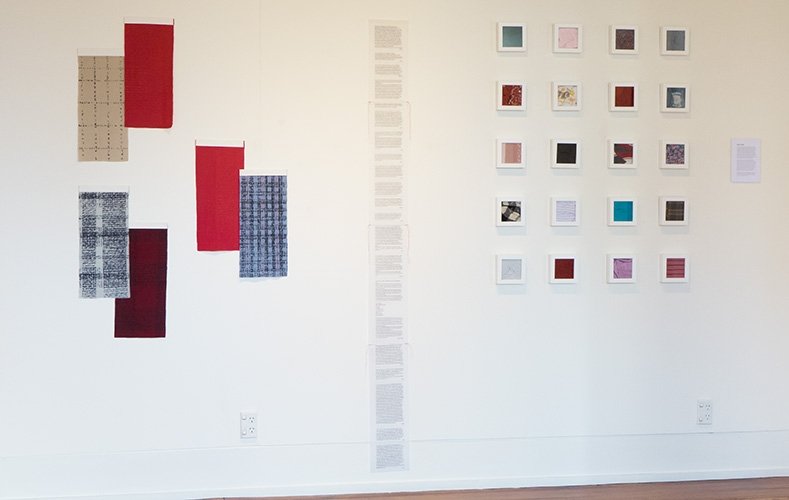Slow Textiles
(Originally published 2017, and archived here from my previous website)
Maddie Gifford and I recently co-curated an exhibition called Embedded, which opened last week and runs until the 28th May at Corbans Estate Art Centre.
This blog is a bit of a rundown on what's in it, and why. I wanted to archive the show, and our thinking around it. So I've also borrowed some of Maddie's texts from the gallery notes.
We invited a diverse selection of contemporary New Zealand artists whose work in textiles is evocative and nostalgic, reflecting traditional notions in textiles and mixing this with more conceptually charged work.
We were drawn to the way textiles can elucidate the past and our relationship to it. Memories are a big part of it. Yet textiles are often taken for granted in our everyday lives. We wanted to highlight that poignancy.
Embedded: Corbans Estate Art Centre, April 13th - May 28th
Nalani Gloor's stunning Macrame works are evocative of the artist’s personal memories of re-settling in different countries and cities throughout her life, her macramé practice, a skill lovingly taught by her mother, was Gloor’s way of grounding herself in each new home. Embodying a sense of comfort and nostalgia, the carefully crafted collection symbolises how she has found a sense of belonging through creating, and the importance of textiles and fibre art practice in this process.
Nalani Gloor: Sawdust and Diamonds
Nalani Gloor: Lanterns, Cosmia 1,2& 3
Pip Steel’s meticulously crafted coverlet, Passage of Time, is directly influenced by traditional Japanese textile methods and the cultural concept of mottainai (the idea of something, in this case, material, being too valuable to waste), Steel has recycled old Japanese indigo dyed cotton, hemp and kasuri woven cloth.
A simple running hand-stitch named sashiko, using special cotton threads forms the intricate patterning. The sashiko technique is uniquely understood as not being about the end product, but the stitching process, while thinking of someone, or one’s self. In Steel’s case, Passage of Time became a metaphor for the repair and enhancement of a mother and teenage-son relationship.
Pip Steel: Passage of Time
Pip Steel: Passage of Time
Gina Ferguson’s knitted pieces are socially charged through her interest in socio-cultural discourse, gender and enriching personal narratives.
Shift is made from felted sheep's wool and was originally shown at the Headland Sculpture on the Gulf, as a long knitted path. Now folded into its current hay-bail-like form, it still speaks strongly of rural connotations and our heritage around the New Zealand wool industry.
Gina Ferguson: Shift
Alongside this, Fergusons tiny Bootees have been delicately crafted using the unusual and personal material - human hair. This brings to light the interiority of memory and the domestic milieu. We’re immediately drawn to the fragility, intimacy, and sentimentality of these objects.
Gina Ferguson: Knitted bootees
Annie Mackenzie learnt directly from an older generation of weavers, ensuring the weaving skillset is passed hand to hand, and weaver to weaver. In this way, the memory of a long history of making is embedded in every textile she weaves.
Mackenzie’s work demonstrates a thoughtful narrative exploring memories in the cloth pieces through the use of recycled textiles, conversations sparked during the very practice of weaving, and memories of domestic objects taken into new contexts.
The slate path rag rug, gives a nod to times past when it was common to make do on scarce means. The crazy-paving sketch is made with an old discarded woolen top, knotted through an old coffee sack, flipped unconventionally to reveal it's usually concealed underside.
Ella is formed using the weaving technique used in netting or sack-making, yet transformed when hung on the gallery wall. Its delicate and fine threads, loosely woven, speak of tradition and skill that are centuries old.
Annie MacKenzie: Slate Path and Ella
Annie MacKenzie: Ella (detail)
Annie MacKenzie: Slate Path (detail)
Audrey Boyles Flower Power takes over 6 metre long wall in the gallery space, creating a series of wild vine like forms. The twisty squiggly wire structures are covered in unique vintage styles of fabric, each chosen to echo memories of the fashion worn by Boyle's maternal lineage and which are also reminiscent of her own childhood, learning the skills from these women to craft and sew.
This is further imbued from a photograph of Boyle's late-great uncle William standing amongst a bed of vibrant, hand painted flowers; the guns sewn into the snake-like structures are a nod to his passing in the First World War and Boyle’s tragic family history.
Flower Power as its seen here, is an extraction of a much larger volume of 80+ vines that Boyle made for the 2016 Harbour View sculpture trail.
Audrey Boyle: Flower Power
Audrey Boyle: Flower Power
Genevieve Packer's blinds, An Alternative View, fit snuggly into the homestead gallery windows making a bold ornate statement about the changing nature of our urban landscape and link us to the past. Bringing the outside in, we are reminded of the rise in high density housing and how we become further removed from our quarter acre section heritage and native fauna and flora. The pattern is created through the removal/absence of material referencing domestic net curtains.
One long length of laser-cut felt is placed within an entire window frame, while three smaller pieces fill the spaces at the top of the remaining windows of the Corban Homestead, evoking memories of its domestic beginnings before becoming a gallery space.
The site-specific installation encompasses the collective memory of a nation by providing a romanticized, New Zealand-centric link to the past.
Packer's textile pieces combine an obsession with surface pattern design and an exploration of the national identity and material culture of New Zealand.
Genevieve Packer: An Alternative View
Genevieve Packer: An Alternative View
Accompanying the window installation are Packer's Prefab bricks. Stacked neatly in the gallery space, as if laying the foundations to a temporary dwelling, these building blocks make a bold statement about the patterns that surround us in our everyday lives. The bricks have been skillfully stitched from different hand printed fabrics, evoking an array of house related textures and patterns.
Genevieve Packer: Prefab
Lastly in Gallery 2, is my own work, an installation called Social Fabric.
This is part of an ongoing project, which first started during my MA in Textiles at Goldsmith's College, at the University of London in 1995.
For me, fabric ignites a violent mash-up of warm nostalgia and and brutal commerce. Much of the fabric industry is obscenely wasteful, and the insatiable demand for cheap clothing entrenches clothing workers in low pay and dangerous conditions.
But despite this grim provenance, fabric is at the heart of who we are. Humans use cloth to swaddle newborns, protect and adorn themselves, and shroud the dead. Fabric plays such a prominent role in our lives, it is - ironically - practically invisible.
I sent around 50 participants each a fabric sample to provoke a short written anecdote. As the stories came back, I felt an enormous sense of value these fabrics give us and to remember the life that our clothes have enabled, both for the wearer and the maker.
I then applied these handwritten words to my silk screens, and used them to print new designs. Further entangling my obsession with text and textile while at the same time referencing the commercial world of fabric and fabric design.
Katie Smith: Social fabric installation
So after some time in the world of commercial textiles and design, it was a refreshing shot in the arm to be able to think about fabric simply as fabric.
I've already turned towards my next round of design concepts and this whole process has really kicked my thinking along. So stay tuned.
The exhibition runs at CEAC until May 28. I hope you can get to check it out.
https://ceac.org.nz/exhibitions/embdedd
https://artsdiary.co.nz/97/2506.html



